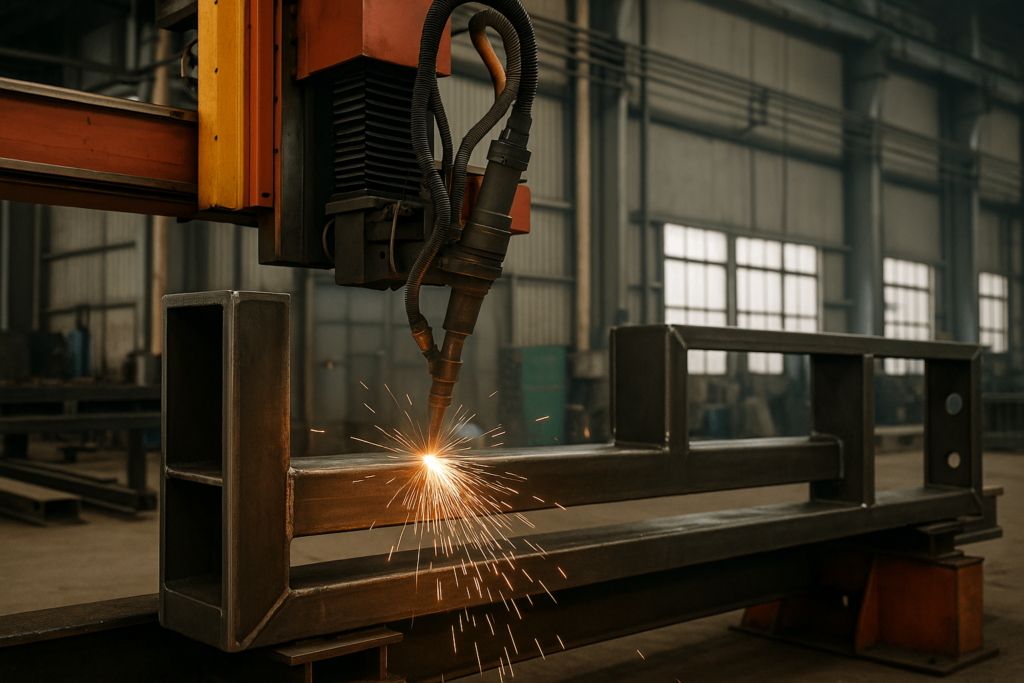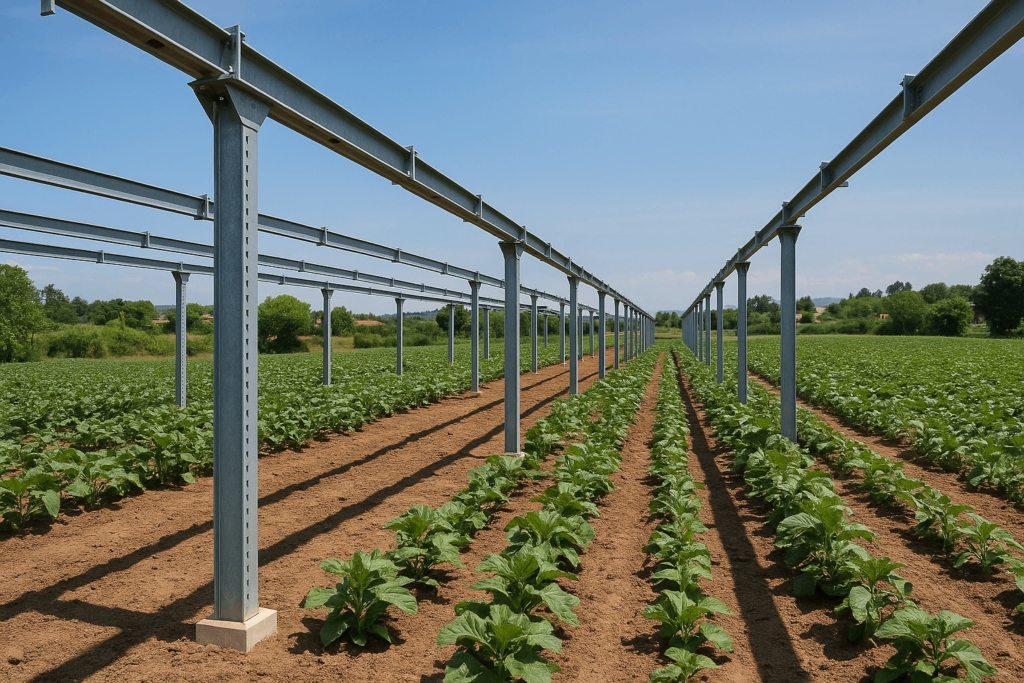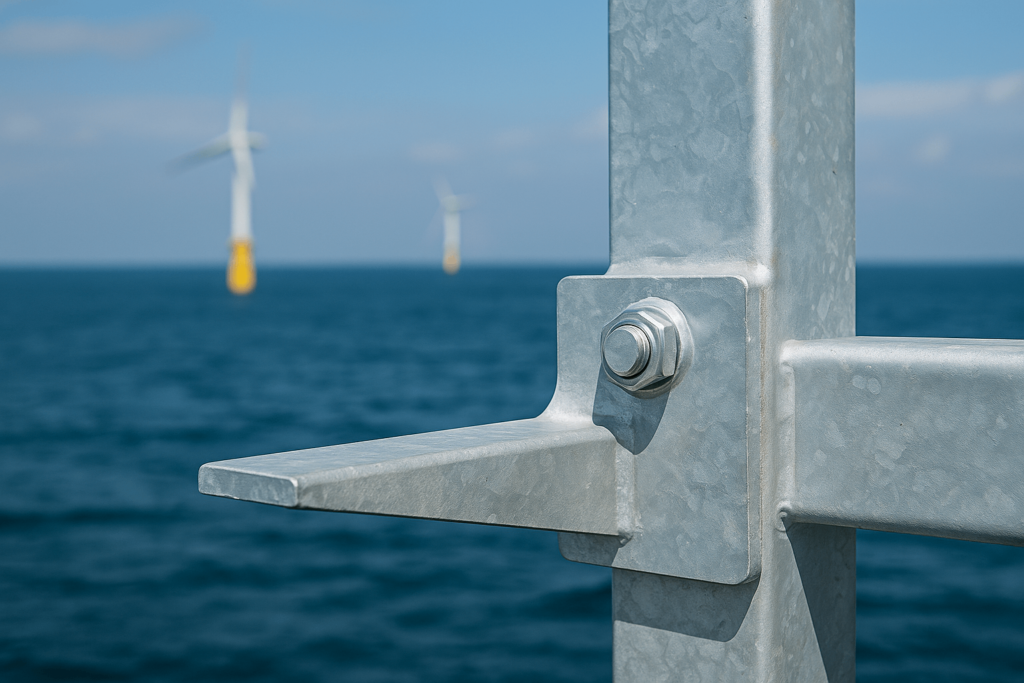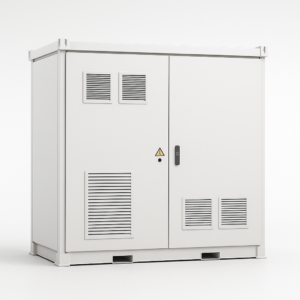Introduction: The Paradox of “Green” Hardware
The global transition to renewable energy is happening at a breathtaking pace. With a 140% surge in capacity over the last decade, the momentum is undeniable. For procurement managers and project developers, this means an unprecedented demand for hardware from custom metal fabrication suppliers.
But this boom hides a critical flaw. In the race to deploy, a focus on minimizing upfront CAPEX can lead to a dangerous trade-off: compromising the quality of the physical infrastructure.
The issue isn’t the energy source itself—it’s the risk of applying a short-term, cost-cutting philosophy to essential renewable energy components. A solar panel’s 30-year warranty becomes irrelevant if its mounting structure fails in year 15, threatening the entire project’s ROI.
The solution lies in a lifecycle-centered manufacturing approach applied to sustainable metal fabrication. This isn’t an abstract concept; it’s a rigorous engineering and production philosophy championed by YISHANG, focused on structural longevity, cost-of-ownership efficiency, and engineering resilience—the essential criteria that safeguard a project’s long-term viability. As a metal fabrication OEM in China, our strategy prioritizes enduring results that global procurement leaders can depend on.
The Stewardship Ethos: From Disposable Components to Generational Infrastructure
For a wholesale buyer, every component decision is a risk management calculation. The conventional fabrication model, which emphasizes the lowest initial bid, often creates downstream liabilities. A stewardship-driven mindset, in contrast, represents an investment in operational assurance.
The “Throwaway” Mindset vs. The “Built-to-Last” Mandate
The “throwaway” mindset treats structural components as low-cost commodities, resulting in designs that merely fulfill minimum requirements but lack lasting performance. This short-term tactic elevates the Total Cost of Ownership (TCO) through frequent replacements, premature failure points, and mounting service interruptions.
By contrast, a longevity-oriented mandate is engineered to optimize the Levelized Cost of Energy (LCOE). It prioritizes superior metallurgy and precision-controlled fabrication to yield infrastructure that maintains structural integrity for decades—preserving capital value and minimizing downstream risk.
| Dimension | The “Throwaway” Mindset (Conventional Approach) | The “Built-to-Last” Mandate (Stewardship Ethos) |
|---|---|---|
| Primary Focus | Minimize Upfront Capital Cost (CAPEX) | Maximize Long-Term Lifecycle Value (LCOE) |
| Material Strategy | Standard, commodity-grade materials | Advanced material science; specified for environment (e.g., corrosion resistance) |
| Design Philosophy | Designed for initial installation and eventual replacement | Designed for 30+ year durability, resilience, and end-of-life disassembly |
| Supply Chain Model | Linear: Take-Make-Dispose | Circular: Source-Fabricate-Reclaim |
| Measure of Success | Low initial bid price | Low total cost of ownership, high reliability, minimal waste |
This paradigm shift is more than ethical—it’s economically sound. In an era of rising environmental volatility and supply chain uncertainty, the most valuable components are those engineered to endure. Responsibly sourced fabrication is the foundation of this reliability, particularly when producing custom offshore wind brackets, solar racking assemblies, and battery storage enclosures.
Forging Stewardship: How a Manufacturing Philosophy Becomes a Physical Product
A production philosophy gains impact only when realized through execution. The tenets of stewardship are translated into tangible components via rigorous processes in engineering, procurement, and precision manufacturing.
This dedication to sustainable fabrication for renewables is what transforms base metal into resilient, mission-ready systems across the global clean energy infrastructure chain.
Pillar 1: Design for Durability — Engineering for a 30-Year Lifespan
The first tenet is an unwavering commitment to durability-first design. In renewable energy deployments, structural robustness is not optional—it’s the baseline.
It starts with deliberate material selection. Not simply choosing steel—but specifying optimal grades with high-performance coatings, such as G90 galvanization for general-purpose use or marine-grade epoxy systems for aggressive exposure zones.
This mindset carries through fabrication. Technologies like fiber laser profiling enable micron-level tolerances, minimizing residual stress and improving mechanical fit.
Automated welding platforms ensure full penetration joints with superior consistency, eliminating weld defects that evolve into structural failures over time. This methodology yields components engineered for endurance—not just compliance.
For a battery enclosure system manufacturer, such upfront precision affects long-term reliability, safety performance, and regulatory adherence.

Pillar 2: The Circular Supply Chain — Designing Out Waste from Day One
Stewardship also demands a rethink of material flow. A closed-loop sourcing framework replaces the outdated linear lifecycle.
Waste mitigation begins in the design stage. Through eco-conscious procurement, we prioritize metals with high recycled content, reducing scope-3 emissions and carbon intensity.
Employing reversible joinery methods, such as bolted connections instead of permanent welds, supports future disassembly and recycling. This not only extends component lifespan but buffers against material cost fluctuations.
Such strategies enable downstream recovery of core metals like aluminum and low-carbon steel—crucial to procurement teams managing volatile global markets. These principles are especially relevant for OEM solar cabinet suppliers operating under cost-sensitive logistics constraints.
Pillar 3: Radical Transparency — The Non-Negotiable of Ethical Sourcing
Authentic integrity starts with verifiable sourcing. Enforcing end-to-end traceability is no longer a value-add—it’s a necessity.
Responsible OEMs integrate traceable sourcing as a default, working only with vetted supply networks that deliver full documentation, including Mill Test Reports (MTRs) that certify alloy composition, country of origin, and treatment processes.
This transparent chain of custody supports ESG mandates, aligns with programs like the Solar Stewardship Initiative (SSI), and protects buyers from reputational or legal risk. For international clients sourcing from metal enclosure OEMs in China, such documentation is a critical safeguard.
Pillar 4: Enabling Energy Democracy — Building for Community Resilience
The decentralization of energy demands more than distributed generation—it demands flexible, adaptable hardware.
As energy democracy expands through community-led solar, shared microgrids, and storage cooperatives, hardware must adapt to atypical layouts, local topographies, and evolving use patterns.
This is where modular fabrication shines. Stewardship in this context means producing site-specific renewable hardware—bespoke cabinets, brackets, or structural frames that serve community-scale demands.
YISHANG facilitates this transformation by offering design-aligned production capacity, delivering custom solar racking systems that reflect the environmental, mechanical, and aesthetic needs of each deployment.
Stewardship in the Field: Three Arenas Where Quality Metal Fabrication is Mission-Critical
The highest validation of any philosophy lies in performance-critical applications. In these sectors, precision metal engineering is the difference between uptime and systemic failure.
Application 1: Agrivoltaics — The Structural Backbone of Dual-Use Land
Agrivoltaics integrates energy and agriculture, but also introduces atypical structural challenges. Clearances for tractors, light diffusion for crops, and weather resilience must be simultaneously addressed.
Agrivoltaic support frames must withstand wind uplift, seasonal load shifts, and mechanical interference—without degrading soil access or crop viability.
Solutions driven by stewardship deliver bespoke racking systems optimized for hybrid agricultural zones, with load-tested joints and safe-surface coatings.
Material choice plays a central role—coatings must resist corrosion but remain non-toxic for crop environments. For any solar racking component supplier, meeting these multidimensional specs is non-negotiable.

Application 2: Offshore Wind — Battling the Elements with Superior Materials
Offshore wind is a corrosive gauntlet. Salt spray, cyclic loading, and substructure flexing challenge every bolt and weld.
A resilience-driven fabrication approach incorporates marine-standard corrosion planning, referencing ISO 12944-6 for protective systems in C5-M zones.
Alloy choices such as 316L stainless or duplex steels, combined with dual-layer epoxy systems, form the first line of defense. Precision-welded seams and certified fasteners complete the system.
This is structural fortitude engineered from metallurgy outward—a baseline for any custom offshore metal hardware supplier building for long-haul performance.

Application 3: Battery Energy Storage (BESS) — The Unsung Hero of Grid Stability
BESS units are increasingly essential but rarely visible. They require containment systems that not only resist environmental threats but also mitigate internal hazards.
Energy storage housings must balance ventilation, waterproofing, and thermal barrier performance. They must also comply with NEMA and NFPA 855 standards for fire and chemical containment.
Fabrication that supports these mandates demands high-precision cutting, flame-rated gasket systems, and anti-corrosion finishes.
For any serious energy storage system supplier, these are not extras—they’re table stakes.

Conclusion: Your Manufacturing Partner is a Steward of Your Investment
The renewable shift is more than a supply chain surge—it’s a generational infrastructure reset. Its durability depends not just on kilowatts produced but on the material decisions behind every fastener, panel, and frame.
A fabrication-forward stewardship model equips your renewable system with engineered longevity, material accountability, and long-term viability.
Selecting the right OEM partner is no longer just about price. It’s about choosing a team who builds with foresight—one who treats your asset not as a cost line, but as a legacy structure.
Planning a renewable deployment? Let’s explore how a resilience-first fabrication strategy can fortify your project outcomes, mitigate field risks, and lock in downstream value.

